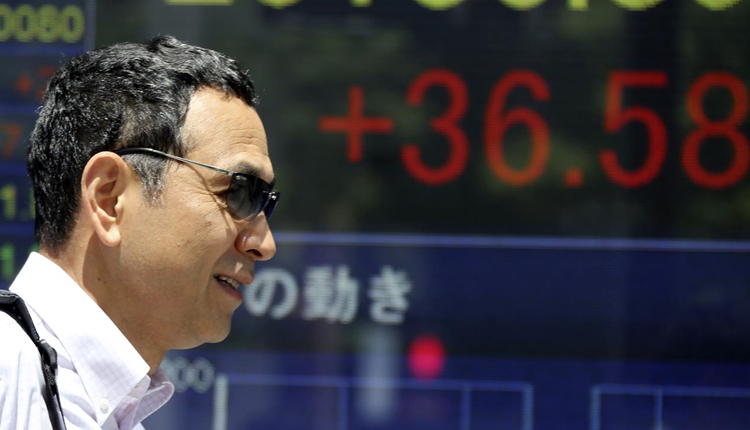Chinese markets made a recovery on Tuesday afternoon following declines in the previous session, after the country’s central bank cut the reserve requirement for banks over the weekend.
The Shanghai composite rose by 0.49 percent while the Shenzhen composite recovered to advance by 0.14 percent.
The People’s Bank of China said on Sunday that it was cutting the amount of cash that banks have to hold as reserves by 100 basis points, effective Oct. 15. The reserve requirement ratio (RRR) is currently 15.5 percent for large commercial banks and 13.5 percent for smaller lenders. The move from the PBOC came amid concerns about the economic impact of Beijing’s ongoing trade war with Washington.
“China’s latest RRR cut of the year has not managed to boost the confidence,” Huani Zhu from Mizuho Bank wrote in a Tuesday morning note. “Despite several rounds of RRR cuts, onshore credit condition remained somewhat tight, especially for (small and medium enterprises).”
Zhu explained that compared to the state-owned firms, private companies and SMEs were more likely to be hit the hardest in the protracted trade conflict with the U.S., given “less robust exports prospect, rising financing cost and softening sentiment.”
China’s on-shore yuan traded at 6.9166 against the dollar at 12:01 p.m., near similar levels as the off-shore currency. Before market open, the PBOC set the yuan mid-point at 6.9019 against the greenback, which was 76 pips weaker than a Reuters estimate of 6.8943 per dollar.
The rest of Asia traded mostly lower, following a mixed finish on Wall Street.
Australia’s ASX 200 was down 1.03 percent as the heavily weighted financial subindex fell 0.98 percent. Major banking names were lower, with Commonwealth Bank shares declining 0.94 percent. The lender said on Tuesday that it will unwind a controversial system of charging customers commissions on financial products, according to Reuters. The changes were sparked by damaging revelations from an inquiry into financial sector misconduct, the news wire reported.
Japan’s Nikkei 225 was down 1.11 percent and the Topix index fell 1.61 percent. Hong Kong’s Hang Seng index continued to beat the general downward trend to gain 0.42 percent in the afternoon.
South Korea’s markets are closed for a public holiday.
On Monday, U.S. Secretary of State Mike Pompeo met with Chinese Foreign Minister and State Councillor Wang Yi in Beijing, against the backdrop of an ongoing trade war between the two economic powerhouses.
While emphasizing the need for cooperation, the two diplomats shared a tense exchange before a group of journalists at the start of their meeting, with Wang accusing the U.S. of “constantly escalating trade friction toward China,” and making “groundless criticism of China’s domestic and foreign policies.”
Pompeo responded, saying: “The issues that you have characterized, we have a fundamental disagreement.”
In currencies, the U.S. dollar index, which tracks the greenback against a basket of currencies, was at 95.757 as of 11:57 a.m. HK/SIN, compared to levels below 95.700 in the previous week.
The Japanese yen traded at 113.09 against the dollar, strengthening from levels above 114.0 last week while the Australian dollar firmed at $0.7085.
Oil prices advanced further on Tuesday around noon during Asian hours, with U.S. crude futures adding 0.55 percent at $74.7 at 11:58 a.m. HK/SIN, while global benchmark Brent crude futures gained 0.6 percent to $84.41.
Source: CNBC


